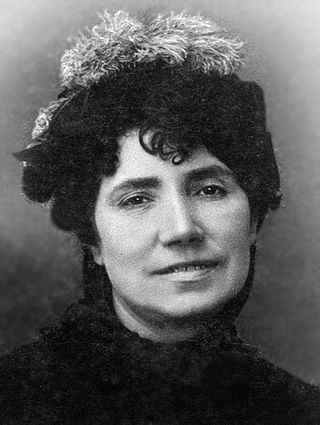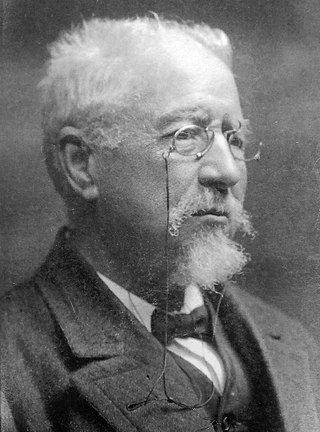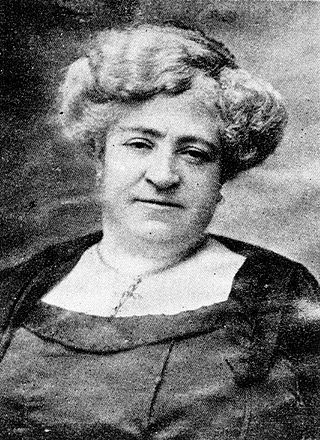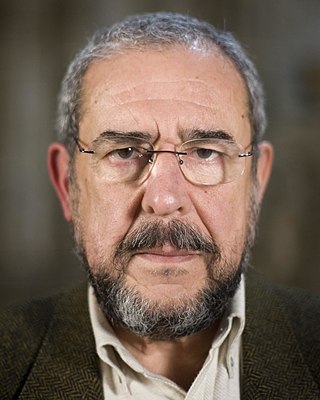
Galicia is an autonomous community of Spain and historic nationality under Spanish law. Located in the northwest Iberian Peninsula, it includes the provinces of A Coruña, Lugo, Ourense, and Pontevedra.

María Rosalía Rita de Castro, was a Galician poet and novelist, considered one of the most important figures of the 19th-century Spanish literature and modern lyricism. Widely regarded as the greatest Galician cultural icon, she was a leading figure in the emergence of the literary Galician language. Through her work, she projected multiple emotions, including the yearning for the celebration of Galician identity and culture, and female empowerment. She is credited with challenging the traditional female writer archetype.

Luis Seoane (1910–1979) was a lithographer and artist. Born in Buenos Aires, Argentina on June 1, 1910, of Galician immigrants, he spent much of his childhood and youth in Galicia (Spain). He was educated in A Coruña. His first exhibition was held in 1929. He is usually included in the group of Os renovadores, the renovators of Galician art in the first third of the 20th century.

Manuel Antonio Martínez Murguía was a Galician journalist and historian who created the Real Academia Galega. He was one of the main figures in Galician Rexurdimento movement. He is also remembered as Rosalía de Castro's husband, publisher and main supporter.

Galicians are a European ethnic group from Spain; it is closely related to the Portuguese people and has its historic homeland in Galicia, in the north-west of the Iberian Peninsula. Two Romance languages are widely spoken and official in Galicia: the native Galician and Spanish.

Xaquín Lorenzo Fernández, Xocas, was a Spanish educator. He studied in Ourense, and his teacher was Ramón Otero Pedrayo. He studied philosophy and letters in Santiago de Compostela and Zaragoza.

Delmi Álvarez is a Galician photojournalist and documentary photographer (he/him). His work documents migration phenomena, especially of the Galician diaspora, and environmental and human rights issues. He has organized and curated several photography projects with other international photographers.

Ramón Otero Pedrayo was a Galician geographer, writer and intellectual. He was a key member of the Galician cultural and political movement Xeración Nós.

The Rexurdimento was a period in the History of Galicia during the 19th century. Its central feature was the revitalization of the Galician language as a vehicle of social and cultural expression after the so-called séculos escuros in which the dominance of Castilian Spanish was nearly complete. The Galician Rexurdimento coincides with the Catalan Renaixença.

Galician, also known as Galego, is a Western Ibero-Romance language. Around 2.4 million people have at least some degree of competence in the language, mainly in Galicia, an autonomous community located in northwestern Spain, where it has official status along with Spanish. The language is also spoken in some border zones of the neighbouring Spanish regions of Asturias and Castile and León, as well as by Galician migrant communities in the rest of Spain, in Latin America including Puerto Rico, the United States, Switzerland and elsewhere in Europe.

Manuel Oreste Rodríguez López was a Galician poet and writer.

The Galician Alternative of the Left was an electoral alliance of left-wing independentist and federalist political parties in Galicia, Spain.
Acción Gallega was one of the most important agrarianist, antiturnista and anti-client politics (anticaciquismo) political movements in Galicia in the 20th century. With a decidedly antiforal and redemptionist character, in its first formulation, constituted the radical sector of the Galician agrarianist in the 1910s.

En Marea is a political party and former political alliance integrated by Podemos, Anova, United Left of Galicia, and some municipal alliances that participated in the 2015 Spanish local elections. It was formed in November 2015 as an electoral coalition to contest the 2015 Spanish general election in Galicia. As part of the coalition agreement with Podemos, the name on the ballot paper for both the 2015 and 2016 general elections was Podemos–En Marea–Anova–EU.

Antón Losada Diéguez was a writer, Galician politician, member of the Irmandades da Fala of Ourense, promoter of the magazine Nós and correspondent of the Royal Galician Academy. He was author of half a dozen books of poetry, seven books, two political writings, the incomplete work A domeadora and the speech Ouservacións encol da prosa galega. He became a member in the Seminar of Galician Studies. He was honoured on the Day of the Galician Letters of 1985.
We–Galician Candidacy was an electoral alliance of Galician nationalist parties formed ahead of the 2015 Spanish general election by the Galician Nationalist Bloc (BNG), Galician Coalition (CG), Galicianist Party (PG), Communist Party of the Galician People (PCPG) and Galician Workers' Front (FOGA). The alliance failed in securing parliamentary representation in the general election, leaving the BNG out of the Congress of Deputies for the first time in 20 years.

Filomena Dato Muruais was a Galician feminist and writer in Castilian Spanish and the Galician language. Remaining in Galicia all her life, she joined movements associated with Galician culture and to liberate women from stigmatization. Of the three poetry books published by Spanish women in the 19th-century, one was by Dato.

Luz Pozo Garza, was a Spanish poet and a member of the Royal Galician Academy.

Pilar García Negro is a Galician/Spanish politician, writer, sociolinguist, teacher, and campaigner in support of Galego, the Galician language, which is spoken in the northwest of Spain and the extreme north of Portugal.

Salvador García-Bodaño was a Spanish poet. He was a member of the Royal Galician Academy from 1992 until his death.



















